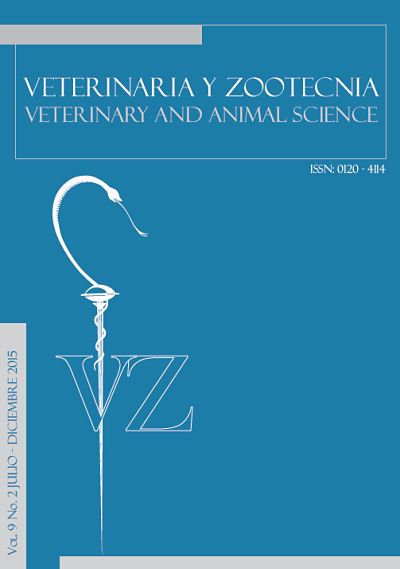Authors
Abstract
In vitro embryo production (IVEP) is an alternative for multiplying genetically superior animals. The high cost for the establishment of laboratories and the low embryo production rates make researchers seek alternatives to simplify and improve the procedure. The Intra Vaginal Embryo Culture is a system using a device (INVO) inserted into the vagina that creates the conditions of temperature and humidity necessary for the development of the embryo. There are no reports of the use of INVO for the in vitro production of bovine embryos. The objective of this study was to evaluate the use of the INVO system for bovine embryo production which evaluated the permanence of the device in the vagina for three (3) days and the production of embryos. In phase one, 14 repetitions were performed in three cows while in phase two 191 presumptive zygotes were cultured. The retention rate of the INVO device in the vagina was 92.9% (13/14). A total of 91.9% (158/172) of the structures placed in culture were recovered. The total cleavage of the INVO group was 47.2% (42/84), and the rate of production of 8 and 16 cell embryos was 9.6% and 4.5%, respectively. The embryos obtained after vaginal culture that were cultured in the laboratory for three additional days produced blastocysts. The results obtained show the feasibility of the INVO system for bovine embryo production, making possible embryo development to stages that can be transferred. The development and cleavage rates are comparable to those obtained under totally in vitro conditions from 8 to 16 cells.
References
Frydman, R.; Ranoux, C. INVO: A simple, low cost effective assisted reproductive technology. European Society of Human Reproduction Monographs, v. 1, p. 85-89, 2008.
Fukuda, M.; Fukuda, K.; Ranoux, C. Unexpected low oxygen tension of intravaginal culture. Hum Reprod., v. 6, p. 1293-1295, 1996.
Gonella-Diaza, A. et al. Generalidades de la producción de embriones bovinos in vitro. Revista de Investigación Agraria y Ambiental, v. 4, n. 1, p. 65-80, 2013.
Guthrie, H.D.; Welch, G.R. Effects of reactive oxygen species on sperm function.Theriogenology, v. 78, n. 8, p. 1700-1708, 2012.
Herradón, P. et al. Fecundación in vitro: alternativa para la mejora genética en bovinos. Alpa. Org. Vet., v. 15, p. 34-41, 2007.
Hilario, R.; Dueñas, J.; González, M. Resultados preliminares de cultivo intravaginal de ovocitos-inyección intracitoplasmática de espermatozoides (INVO-ICSI), en el Centro de Fertilidad Procrear. Revista Peruana de Ginecología y Obstetricia, v. 60, n. 1, p. 79-84, 2014.
Navarro-Carbonell, D.E. et al. Comparación de la calidad embrionaria entre fertilización in vitro (FIV) y cultivo intravaginal de ovocitos (INVO) en el Centro Colombiano de Fertilidad y Esterilidad - CECOLFES, Bogotá, Colombia. Revista Colombiana de Obstetricia y Ginecología, v. 63, n. 3, p. 227-233, 2012.
Ranoux, C. Advanced Methods and Novel Devices. In: Nagy, Z.F. et al. (Ed.). Practical Manual of In vitro Fertilization. New York: Springer Science, 2012. p. 161- 169.
Ranoux, C. et al. A new in vitro fertilization technique: Intravaginal culure.Fert. Steril., v. 49, p. 654-57, 1988.

 pdf (Español (España))
pdf (Español (España))
 FLIP
FLIP














